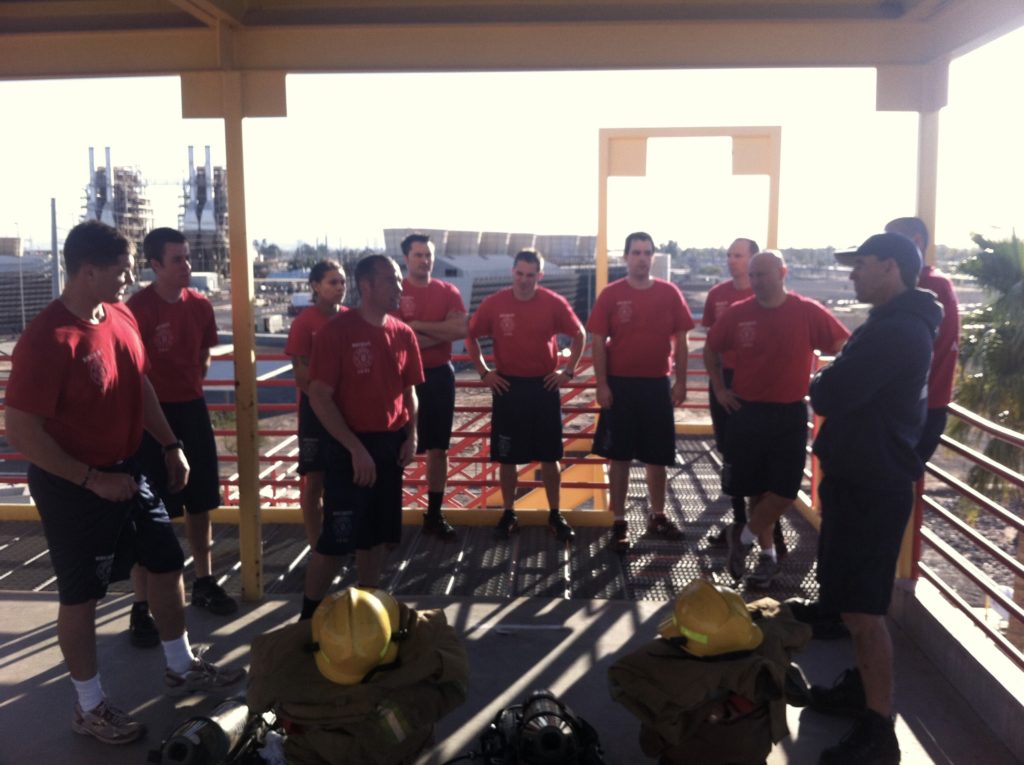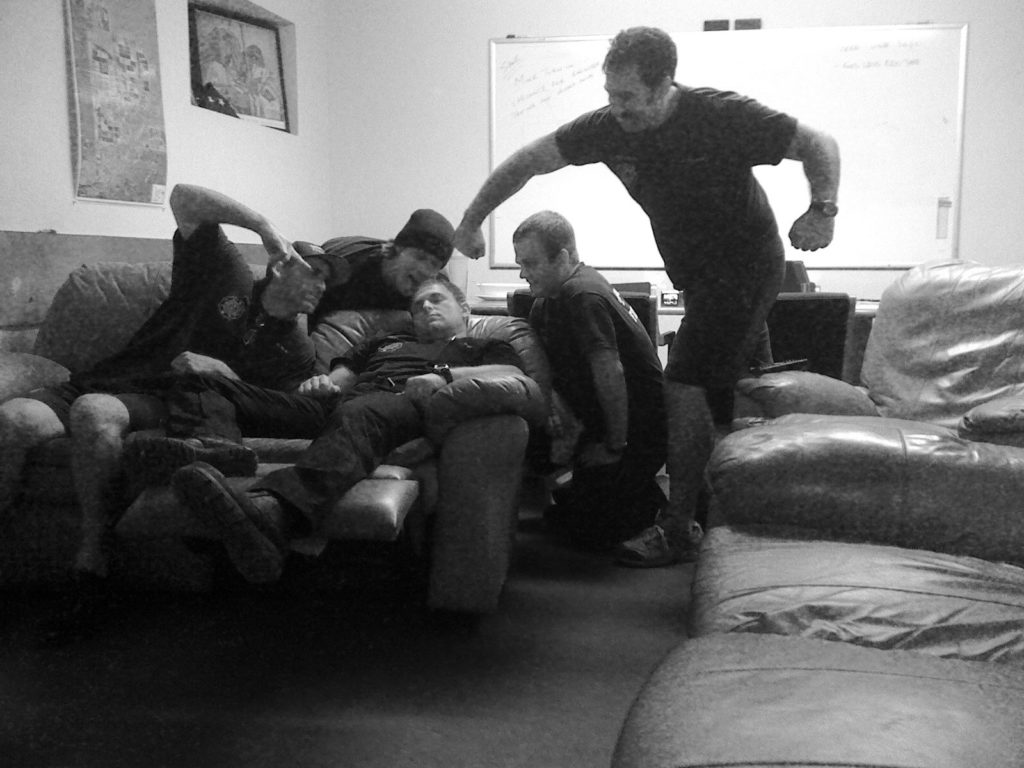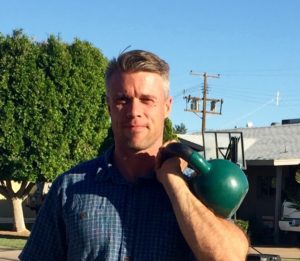By CHRIS ADAMS
Congratulations on deciding to join the fire service. Committing to a career of public safety service is a noble endeavor. The process is challenging and very competitive but well worth the struggle and sacrifice.
I’ve been in the fire service for over 15 years. I have had the opportunity to observe, assist and program fitness for 9 fire academies as well as the same number of firefighter lateral transfer programs. I’ve made many mistakes, had some successes, and am still learning more every day.
When deciding what to write for tactical barbell, I wanted to speak to the next generation firefighter. With the prevalence of fitness information available on the Internet it’s tough to decide which methods to use when training for a fire service career. I based the following recommendations on what I’ve observed in academies and on the fire ground. I’ve tried to boil the “big idea” down to four main bullet points. Keep in mind that these aren’t specific directions or programs, as there are many useful fitness tools for successful preparation. The priorities I list are benchmarks that an individual should focus on in order to thrive in the fire academy and on the job.

Priorities
The four priorities are listed in a general order of importance. Keep in mind that these goals CAN be tackled somewhat concurrently. For example, building strength is going to improve muscle mass. Increased muscle mass raises your resting metabolic rate. A higher metabolic rate helps you burn more fat. Contrary to popular bro-science, training endurance will not “burn muscle”. Especially if one practices strength while building endurance Strength training can improve movement and mobility as well as the other way around. Choose one priority as your primary goal and let the others come along for the ride until you achieve your that goal. I’ve found that such a focus is more beneficial for long term success.
1. Reduce body fat to health level.
2. Learn how to move
3. Build a base of strength
4. Build an aerobic base and then turn that into maximal aerobic power
In this first installment I’m going to cover priority number one. I’ll cover the other three benchmarks in subsequent articles.
Goal #1: Reduce Body Fat to a Healthy Range
The first thing I recommend is getting into a healthy weight range. For men this is a body fat of 18% or less with around 10% hovering in the “athletic” range. For women, the range is below 24% with around 15% moving into the athletic territory. I’d like to point out that these numbers are realistic and maintainable without large sacrifices.
Why is body composition important? First and foremost is the health aspect. A healthy weight range will benefit everyone regardless of chosen profession. Being overfat is correlated with several disease processes including but not limited to diabetes, high blood pressure, high cholesterol, stroke, heart disease, and cancer. You’re doing yourself a favor by reducing and maintaining your fat mass in a healthy range.
Next comes the performance aspect. It’s oversimplification (please send pedantic emails to stateofreadiness@icloud.com) but for our purposes fat doesn’t do anything. It’s dead weight. Take an individual who weighs 150 pounds at 30% body fat. That equates to 50 pounds of fat and 100 pounds of lean body mass. How hard do you think it will be for this individual to perform a pull up compared to the same individual with the same lean body mass and only 15 pounds (13%BF) of fat. What about pushups? Running? Self rescue? Rescue of a brother/sister firefighter? Getting your weight into an ideal range literally makes you lean and mean! You can do more work with the same muscle. I know I’m going to hear grumbling from this. My guess is more of the complaints will come from those comfortably on the job.
“ What the f—k are you talking about? I’ve been doing this job for X years and I can still do it. Even if I’ve gotten a little bigger.”
True! Lugging around a few extra LB’s doesn’t mean you can’t do the job. And I’ll say that experience counts for a lot! As we age, we probably won’t be as agile or powerful as we were fresh out of the academy. What a veteran loses in physical capacity he or she gains in confidence and experience. But you can’t argue that even the salty veteran wouldn’t benefit from maintaining a reasonable weight range in terms of both job efficiency and health. Especially an individual who’s pushing into their 40’s and 50’s. Reducing the positive markers for all cause mortality doesn’t discriminate between newbies and experienced firefighters.
Solution
Have a plan and follow it to the exclusion of others- I’ve seen people improve body composition using several different types of seemingly contradictory diets. Vegan/vegetarian, paleo, Atkins , IIFYM (if it fits your macros) all seem to work, at least for a time, when someone truly commits to making diet changes. To me it seems that what these all have in common is that the individual is following something different than what he or she was dong before. This person is following a plan, making better food choices and exercising portion control. Foods that may have been consumed with abandon before are now consumed in healthy moderation or eliminated altogether.
I’ll add a caveat. Be careful of extreme or complicated diets. Simpler is better in my experience. Overly complicated or restrictive diets are great when an individual has motivation. But as the motivation wanes, which it almost certainly will, Disciplined eating becomes more challenging. You want a diet that’s tolerable long term. You can look at it this way. If you’ve been eating a certain way for over a month, and it’s still hard to follow, it’s probably not sustainable.
What’s your energy balance?
Recognize that body composition mainly comes down to quantity and choices. Exercise is beneficial but secondary. There’s any number of diet combinations that can work. But in my experience energy balance appears to be the biggest catalyst for change one way or another. I didn’t want it to be true. I’d love to tell you that a high-fat-low-carb-paleo diet (because this is what I dogmatically clung to for several years) will keep you lean, even with caloric excess. But it just ain’t so. Calories do matter, probably more than any other dietary factor.
Macros and portions
So how much should you eat? While I think that calorie balance is important, I don’t think that calorie counting is the way to go. It can be quite revealing and helpful to use a food journal to keep track of caloric (as well as other metrics) intake for a limited amount of time, but it can drive you crazy long term. What I do suggest is starting with a simple base amount and expanding from there.
- 3-4 meals per day
- 2 palm size worth of lean (in general) protein.
- 1 fist size worth of carbohydrate
- 2 thumb size portions of fat (consider hidden sources such as cooking oil or fatty meats)
- At least 1 fist size portion of veggies with more being okay. (No, potatoes are not vegetables.)
That’s it. I like to start clients with these guidelines. Following these guidelines we wait and observe. Is the individual losing weight (most people will fluctuate 1-3 pounds during the day)? A reasonable goal is 1-2 pounds lost per week. If the client isn’t generally decreasing in weight after a couple weeks of improved eating I feel it’s best to reduce the fat by maybe 1 thumb per meal. Then, repeat the observational process and see what happens. Keep in mind that weight loss is an individual thing. This study, released as I was writing this article, seems to demonstrate that people may lose weight at different rates even with equal diet and exercise.
Also watch for energy levels, mood swings, and hunger. You want steady energy through out the day, you shouldn’t be getting “hangry”, and you should feel full and satisfied for a few hours before getting hungry. If any of these markers are out of whack there’s something that needs to be changed.
I’ve found that common solution to “hangriness”
- You may not be eating enough at a meal
- You might be eating too many carbohydrates (try increasing protein and fat a bit while reducing carbs)
Food choices
I’m going to keep this simple. Eat like and adult. You know that excessive sugar, caffeine, alcohol and carbohydrates aren’t good for you. You know that water, vegetables, lean meats, healthy fats (olive oil, avocado oil, coconut oil, and smaller amounts of butter or animal fat) fruits, nuts and seeds are beneficial. Choose the latter category more often than the former. Eat enough carbohydrate to fuel activity. If you’re not doing a lot of strength training or high intensity training, you probably don’t need as much carbohydrate as you think. If you’re sedentary you need very few carbohydrates at all.
If you’re working on aerobic base building I suggest you keep carbs to a minimum. Through ABB you want to train your body to metabolism fat for fuel. A high carbohydrate load is counterproductive to this goal as ingested carbohydrate is used preferentially over fat. In other words: you don’t need to carb-load. More on ABB in the third installment of this series.
Keep your food choices healthy 90% of the time – If you’re really focused on losing weight then it may be better to skip this advice and go 100% until you’re ready to maintain. For long term maintenance a 90/10 plan seems to be reasonable. What does this look like practically?
Let’s say an individual eats 4 meals a day. That’s 28 meals per week. Eating “clean” 90% of the time means that he/she eats roughly 25 solid meals sticking to the plan. 3 meals per week can include some indulgences. This doesn’t mean go crazy and eat an entire large hamburger taco double cheese pizza. This means have a couple slices of pizza, OR a small ice cream, OR a glass of wine with dinner. Most people seem to be happy with the 90/10 plan. It allows for some flexibility in social situations or when you just want a treat.
Sleep
I can’t stress enough how important sleep is to maintaining a healthy weight as well as putting on muscle and improving performance. You have to decide what’s more important: you fitness goals or your late night activities. Make rest a priority. Aim for at least 7 hours per night with 8-9 being optimal. It’s unfortunate that today’s society tends to glorify lack of sleep. Sleeping adequately doesn’t mean your lazy, it means your smart.

Keep a realistic timeframe
Crash dieting can work but is often followed by a rebound. Gradual weight loss tends to be longer lasting and more sustainable. It’s generally recommended to shoot for a weight loss of 1-2 pounds per week. If you have 100 extra pounds to loose it may take a year to do so. Be prepared to make lasting lifestyle changes.
I’ll reiterate that for the purposes of the article, I’ve oversimplified the concepts. But I think they still give you an idea of what I’m trying to say. If you like to learn more about eating for health and performance I recommend check out the following links:
Stay tuned to Tactical Barbell for Learn How To Move; part two in a four part series about preparing for a career in the fire service.
 Chris Adams, an Arizona native, Is firefighter/paramedic with 15 years of service to the Salt River Fire Department in the Pima-Maricopa Indian Community. When Chris isn’t reading, learning, or blogging about fitness he enjoys rock climbing, canyoneering, and exploring in the American Southwest.
Chris Adams, an Arizona native, Is firefighter/paramedic with 15 years of service to the Salt River Fire Department in the Pima-Maricopa Indian Community. When Chris isn’t reading, learning, or blogging about fitness he enjoys rock climbing, canyoneering, and exploring in the American Southwest.
